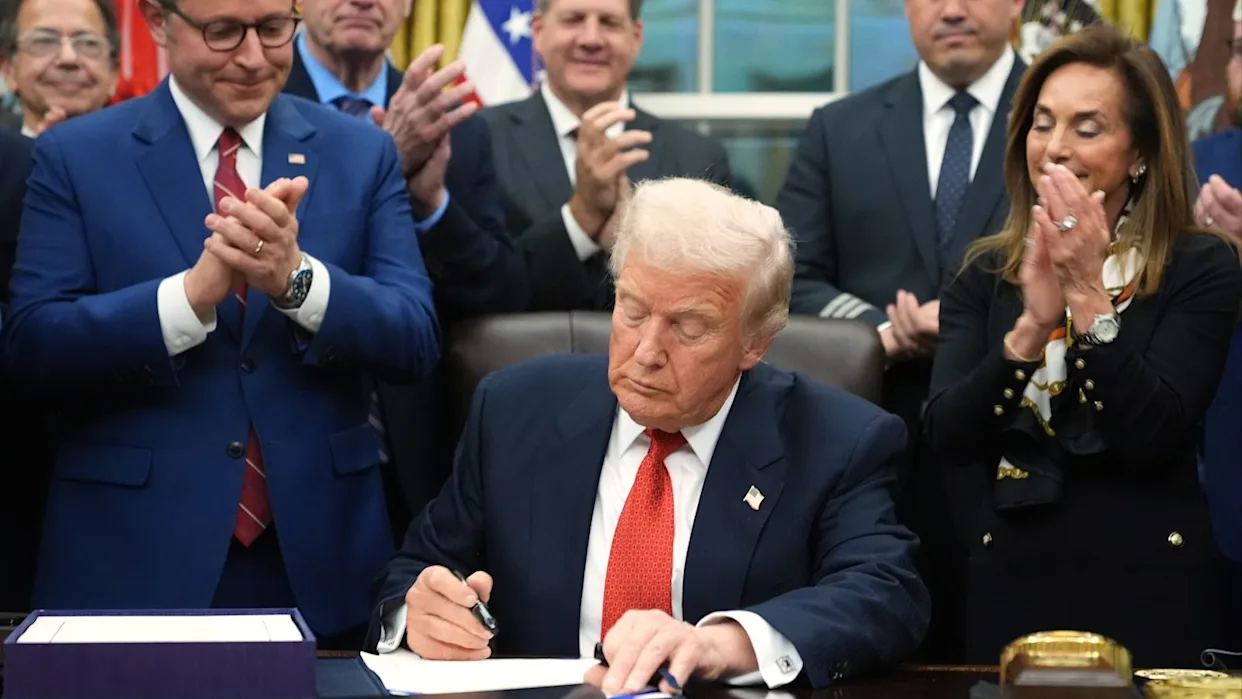Canada Turns to China as U.S. Trade Pressure Escalates
In a striking diplomatic turnaround, Canada rebuilds ties with China amid Trump trade war. Canada is re-engaging with China after years of strained relations. The renewed outreach comes as President Donald Trump’s renewed trade war targets key Canadian industries. This pushes Ottawa to diversify its economic partnerships. As Canada rebuilds ties with China amid Trump trade war, its strategy is seen as a necessity.
The shift was underscored by a symbolic handshake between Prime Minister Mark Carney and President Xi Jinping during the Asia-Pacific Economic Cooperation (APEC) summit in South Korea. Their 40-minute meeting marked the first time in nearly a decade that leaders from both nations met face-to-face. According to statements from Ottawa, both sides committed to strengthen dialogue. They will also pursue mutual trade opportunities. This sets the stage for what Canadian officials have called a “turning point” in bilateral relations.
The reconciliation comes after years of diplomatic bitterness following the 2018 arrest of Chinese executive Meng Wanzhou and the subsequent detention of two Canadians in China. Those incidents froze cooperation between Ottawa and Beijing and then Canada rebuilds ties with China amid Trump trade war. This led to sharp declines in trade and cultural exchange. Yet the reality of a resurgent trade confrontation with Washington has compelled Canada to reconsider its foreign policy priorities.
China recently reinstated Canada to its approved travel list for group tourism. This move is expected to inject millions of dollars into Canada’s hospitality sector according to Destination Canada. Canadian officials hope this will help revive visitor flows. These flows plummeted during the pandemic and years of diplomatic chill.
Economic Necessity Drives a 180-Degree Policy Shift
Both governments have practical incentives to mend ties. As the U.S. imposes new tariffs and threatens further sanctions, Canada finds itself increasingly squeezed between its two largest trading partners. Last year, Ottawa imposed a 100% tax on Chinese electric vehicles in coordination with Washington. This cited unfair competition from state-subsidized manufacturers. Beijing swiftly retaliated with 100% tariffs on Canadian canola oil and meal. It followed by a 75.8% levy on canola seed—a devastating blow for Canadian farmers.
The Canadian agricultural sector, which exports over $7.5 billion in canola products annually, has struggled to recover from the restrictions. Meanwhile, U.S. tariffs on aluminum, lumber, and manufactured goods have compounded the strain on the country’s export-dependent economy. Analysts from Statistics Canada note that cross-border trade with the U.S. accounts for roughly $700 billion annually. Therefore, even small policy disruptions have outsized consequences. Canada rebuilds ties with China amid Trump trade war and navigates these challenges.
Ontario Premier Doug Ford has been among the most vocal advocates for renewed economic cooperation with Beijing. He argues that “Canada must act in its own best interest when our largest ally becomes our largest threat.” Public opinion mirrors this sentiment. A recent national survey found 46% of Canadians now view the U.S. as a greater threat to their economy than China.
Experts from the University of Toronto’s Munk School of Global Affairs describe Ottawa’s new approach as a “180-degree pivot.” It is a strategic adaptation driven by economic survival rather than ideology. As China signals readiness to lift agricultural tariffs in exchange for fairer treatment of its automotive exports, the once-frozen diplomatic landscape is thawing faster than expected.
China’s Strategic Play to Weaken U.S. Influence
For Beijing, rekindling ties with Canada is both a geopolitical and economic maneuver. With the U.S. pursuing an aggressive “America First” trade agenda, China sees an opening to expand its influence among traditional U.S. allies. Xi Jinping’s recent outreach to Western leaders marks a shift from years of defensive diplomacy toward a more confident, flexible global posture.
Officials in Beijing have closely watched the deterioration in U.S.–Canada relations. They recognize an opportunity to position China as a pragmatic partner offering stability and access to Asia’s fast-growing markets. Analysts suggest Beijing’s goal is to drive a strategic wedge between Washington and its allies, including Ottawa, to blunt the impact of American-led containment efforts in trade and technology.
This strategy is evident in China’s new trade overtures and its emphasis on shared prosperity through initiatives like the Belt and Road Initiative. This initiative continues to attract investment interest despite Western skepticism. For Canada, the challenge lies in balancing these new opportunities with its deep economic integration with the U.S.
Yet political observers caution that renewed cooperation with China will not come without conditions. Beijing has signaled that access to senior leadership and broader economic cooperation depend on respecting its “core interests.” These include sensitive topics such as Taiwan and human rights. Canadian officials face growing pressure to navigate this delicate terrain. They must do so without further alienating Washington or compromising democratic principles.
As Canada redefines its place in a world marked by shifting alliances and economic uncertainty, the way Canada rebuilds ties with China amid Trump trade war reflects both pragmatism and risk. The trade war initiated by President Trump may have inadvertently triggered a new geopolitical realignment. In this realignment, Canada, long anchored to its southern neighbor, seeks balance in the rising influence of the East.






